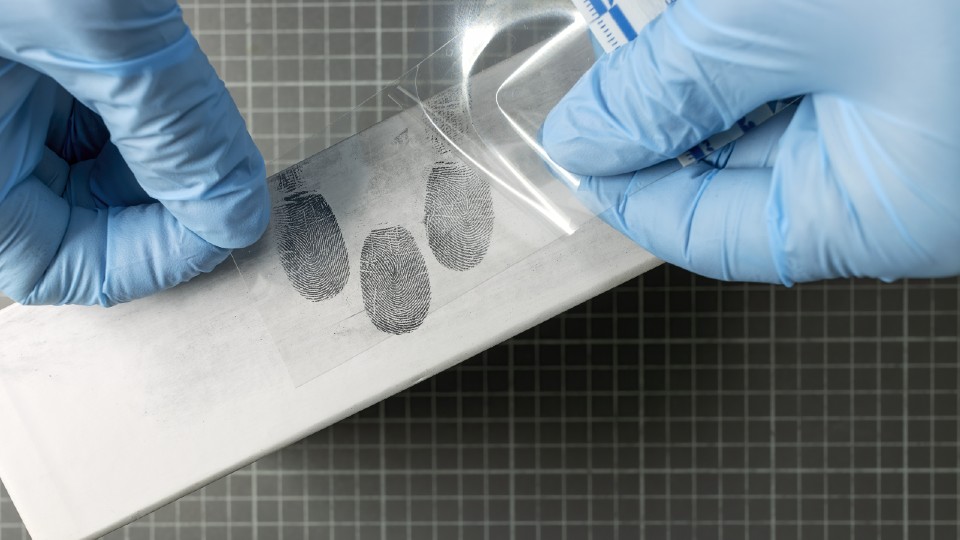Analytical scientists from Loughborough University have demonstrated for the first time that drug residue – namely the fast-acting sleeping pill Zolpidem, which has been linked to drug-facilitated sexual assault and drink spiking – can be detected on gel-lifted fingerprints.
Dr Jim Reynolds and Dr Ayoung Kim say the breakthrough could shed new light on cold cases and unsolved crimes as forensic gel lifters – which transfer prints onto a gelatine surface – are used globally by scenes of crimes officers to preserve and visualise fingerprints.
“This is the first time that analysis of gel-lifted prints for a drug substance has been accomplished and shows that lifted prints and other forensic marks can be interrogated for useful information”, says Dr Reynolds, the research lead.
“Since gel-lifted prints and marks can be stored for many years, the technique could be of real use in cold cases where additional information may prove useful to either link or exonerate a suspect to the investigation.
“Working with police forces and applying the method to cold case samples could help bring criminals to justice who may have thought they have got away with it.”
A number of tests exist which can detect drugs directly from fingerprints, but these face limitations. They can be destructive to the fingerprint, degrade drug residues, and are affected by environmental interferences.
It has long been speculated that gel-lifted prints contain valuable chemical information and could offer more accurate drug detection.
However, traditional techniques used to analyse the chemicals present in a sample have previously not been suitable for gel lifters. This is because they detect all chemicals present, including those that make up the gel, making it difficult to identify specific substances.
The method used by Dr Reynolds and Dr Kim, called sfPESI-MS, overcomes this issue using a rapid separation mechanism that distinguishes the drug substance from the background of the gel.
The process involves sampling the chemicals from the gel lifters into tiny liquid droplets. The chemicals extracted into the droplets are then ionized, which means they gain or lose electric charge depending on their chemical properties. The drug substance chemicals are more surface active than the chemicals originating from the gel, which enables them to be separated from the mixture.
This separation method enables the direct detection of a drug substance using mass spectrometry, a technique that identifies chemicals by measuring their molecular weight.
Published in the Drug Testing and Analysis journal, the researchers have successfully tested the technique using Zolpidem-laced fingerprints lifted from glass, metal, and paper surfaces in a laboratory setting.
They now hope to work with police forces to analyse stored gel-lifted prints and use the method to identify other substances.
Dr Reynolds said: “Zolpidem was the focus of our research, but the method could just as easily be applied to other drug substances a person may have been handling and could be applied to other chemicals such as explosives, gunshot residues, paints, and dyes.
“By linking chemical information to the fingerprint, we can identify the individual and link to the handling of an illicit substance which may prove useful in a prosecution.
“This could be useful to detect individuals who have been spiking drinks, for example, if the drug they are using gets onto their fingertips, then they will leave evidence at the scene.”
Dr Kim, who is the first author of the paper and completed the research as part of her PhD at Loughborough, added: “We would like to apply our method to real samples from criminal investigations, it would be good to know my PhD research has helped bring criminals to justice.”

